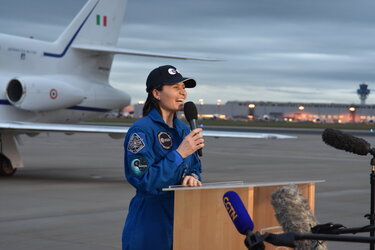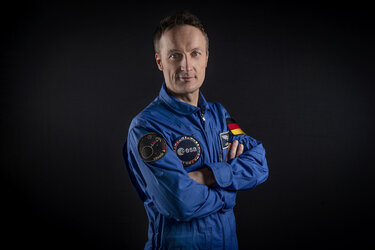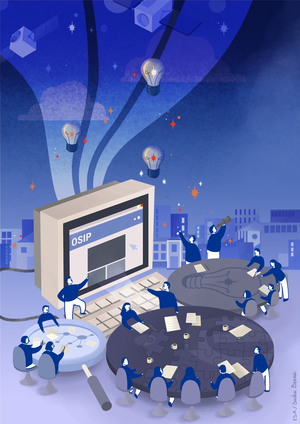Accept all cookies Accept only essential cookies See our Cookie Notice

About ESA
The European Space Agency (ESA) is Europe’s gateway to space. Its mission is to shape the development of Europe’s space capability and ensure that investment in space continues to deliver benefits to the citizens of Europe and the world.
Highlights
ESA - United space in Europe
This is ESA ESA facts Member States & Cooperating States Funding Director General Top management For Member State Delegations European vision European Space Policy ESA & EU Space Councils Responsibility & Sustainability Annual Report Calendar of meetings Corporate newsEstablishments & sites
ESA Headquarters ESA ESTEC ESA ESOC ESA ESRIN ESA EAC ESA ESAC Europe's Spaceport ESA ESEC ESA ECSAT Brussels Office Washington OfficeWorking with ESA
Business with ESA ESA Commercialisation Gateway Law at ESA Careers Cyber resilience at ESA IT at ESA Newsroom Partnerships Merchandising Licence Education Open Space Innovation Platform Integrity and Reporting Administrative Tribunal Health and SafetyMore about ESA
History ESA Historical Archives Exhibitions Publications Art & Culture ESA Merchandise Kids Diversity ESA Brand Centre ESA ChampionsLatest
Space in Member States
Find out more about space activities in our 23 Member States, and understand how ESA works together with their national agencies, institutions and organisations.
Science & Exploration
Exploring our Solar System and unlocking the secrets of the Universe
Go to topicAstronauts
Missions
Juice Euclid Webb Solar Orbiter BepiColombo Gaia ExoMars Cheops Exoplanet missions More missionsActivities
International Space Station Orion service module Gateway Concordia Caves & Pangaea BenefitsLatest
Space Safety
Protecting life and infrastructure on Earth and in orbit
Go to topicAsteroids
Asteroids and Planetary Defence Asteroid danger explained Flyeye telescope: asteroid detection Hera mission: asteroid deflection Near-Earth Object Coordination CentreSpace junk
About space debris Space debris by the numbers Space Environment Report In space refuelling, refurbishing and removingSafety from space
Clean Space ecodesign Zero Debris Technologies Space for Earth Supporting Sustainable DevelopmentLatest
Applications
Using space to benefit citizens and meet future challenges on Earth
Go to topicObserving the Earth
Observing the Earth Future EO Copernicus Meteorology Space for our climate Satellite missionsCommercialisation
ESA Commercialisation Gateway Open Space Innovation Platform Business Incubation ESA Space SolutionsLatest
Enabling & Support
Making space accessible and developing the technologies for the future
Go to topicBuilding missions
Space Engineering and Technology Test centre Laboratories Concurrent Design Facility Preparing for the future Shaping the Future Discovery and Preparation Advanced Concepts TeamSpace transportation
Space Transportation Ariane Vega Space Rider Future space transportation Boost! Europe's Spaceport Launches from Europe's Spaceport from 2012Latest

From Earth with love
Thank you for liking
You have already liked this page, you can only like it once!
“Valentine’s Day has struck again,” tweeted ESA astronaut Thomas Pesquet when he posted this image of a heart-shaped lake in Mongolia. Thomas took this image from the International Space Station during his Proxima mission in 2017.
Two years on, it is that time of year again, the day that brings some joy and others anxiety. But if thoughts of ordering flowers and making dinner reservations are stressing you out, spare a thought for our stressed-out Earth.
The fact that Earth is rich in flora and fauna is without question, but our planet is changing fast – particularly because human activity is placing pressure on natural resources.
Increasing industrial production and a continued reliance on fossil fuels is causing global temperatures to rise. With a change in climate comes huge environmental challenges that humans will not be able to keep up with.
We need to check the status of our relationship with Earth before we wreck it. How?
The first step to fixing a problem is to understand the causes and full extent of it. The vantage point of space provides a window on the world like no other, through which to understand and monitor our changing planet.
And Earth-observing satellites are not the only tools to do this. Astronauts are also viewing Earth from space and taking pictures. Their photography is not just a perk of being an astronaut; they are often used to supplement satellite imagery and provide a different perspective.
Take the case of ESA astronaut Andreas Mogensen. He was tasked with capturing a phenomenon notoriously difficult to photograph from Earth: elusive electrical discharges in the upper atmosphere that sport names such as red sprites, blue jets, pixies and elves. Reported by pilots, they are difficult to study as they occur above thunderstorms. (A dedicated instrument called ASIM has since been launched to the Space Station to monitor this phenomenon).
Besides their value to science, astronaut photographs from space are a great tool for science communication. From the very first images of Earth taken by NASA astronauts in the 1960s that showed the world how fragile Earth is, to the ones like this taken by astronauts and posted to social media, they all drive home an important message:
Love our planet, because it is the only home we have.
-
CREDIT
ESA -
LICENCE
ESA Standard Licence

Down to Earth

Loving big

Warming regards

Matthias’ Cosmic Kiss















 Germany
Germany
 Austria
Austria
 Belgium
Belgium
 Denmark
Denmark
 Spain
Spain
 Estonia
Estonia
 Finland
Finland
 France
France
 Greece
Greece
 Hungary
Hungary
 Ireland
Ireland
 Italy
Italy
 Luxembourg
Luxembourg
 Norway
Norway
 The Netherlands
The Netherlands
 Poland
Poland
 Portugal
Portugal
 Czechia
Czechia
 Romania
Romania
 United Kingdom
United Kingdom
 Slovenia
Slovenia
 Sweden
Sweden
 Switzerland
Switzerland

























